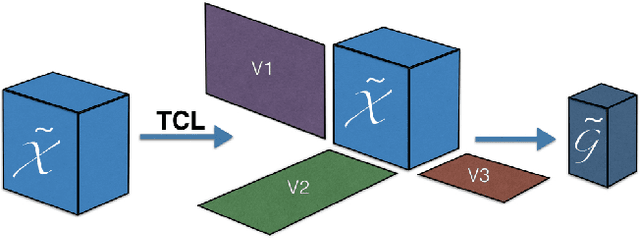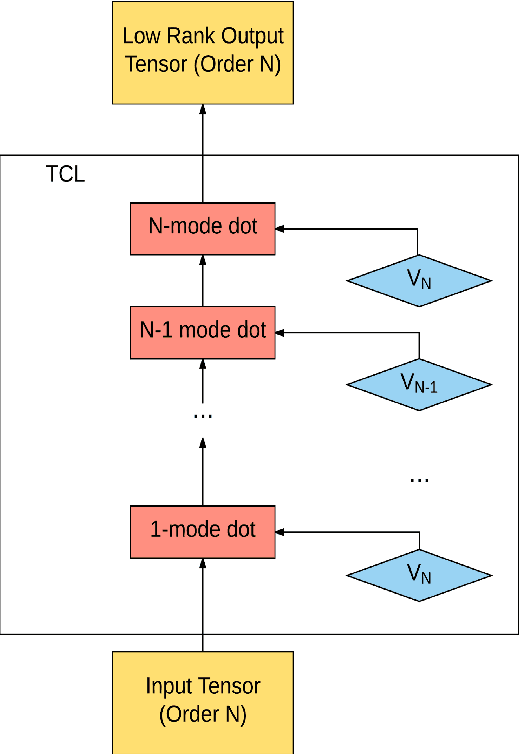Tensor Contraction Layers for Parsimonious Deep Nets
Paper and Code
Jun 01, 2017



Tensors offer a natural representation for many kinds of data frequently encountered in machine learning. Images, for example, are naturally represented as third order tensors, where the modes correspond to height, width, and channels. Tensor methods are noted for their ability to discover multi-dimensional dependencies, and tensor decompositions in particular, have been used to produce compact low-rank approximations of data. In this paper, we explore the use of tensor contractions as neural network layers and investigate several ways to apply them to activation tensors. Specifically, we propose the Tensor Contraction Layer (TCL), the first attempt to incorporate tensor contractions as end-to-end trainable neural network layers. Applied to existing networks, TCLs reduce the dimensionality of the activation tensors and thus the number of model parameters. We evaluate the TCL on the task of image recognition, augmenting two popular networks (AlexNet, VGG). The resulting models are trainable end-to-end. Applying the TCL to the task of image recognition, using the CIFAR100 and ImageNet datasets, we evaluate the effect of parameter reduction via tensor contraction on performance. We demonstrate significant model compression without significant impact on the accuracy and, in some cases, improved performance.
 Add to Chrome
Add to Chrome Add to Firefox
Add to Firefox Add to Edge
Add to Edge